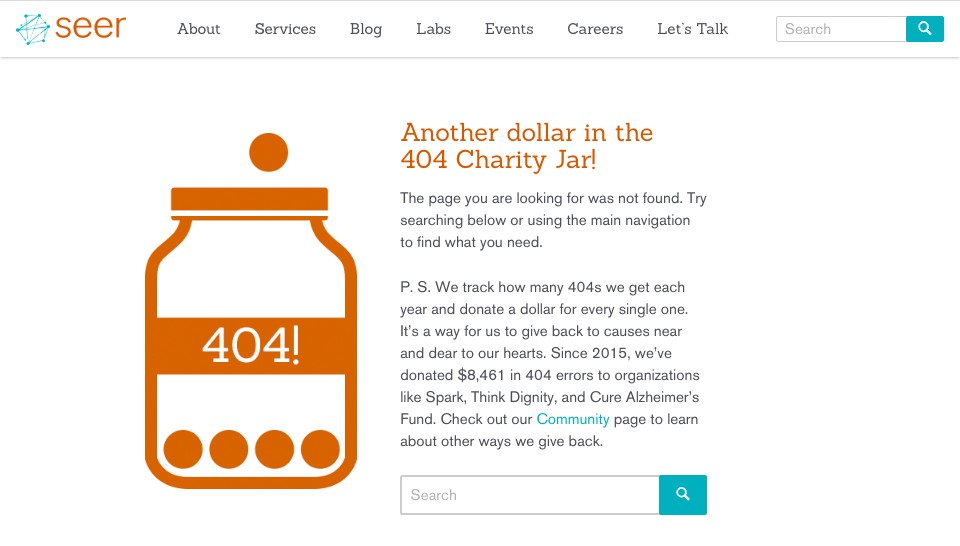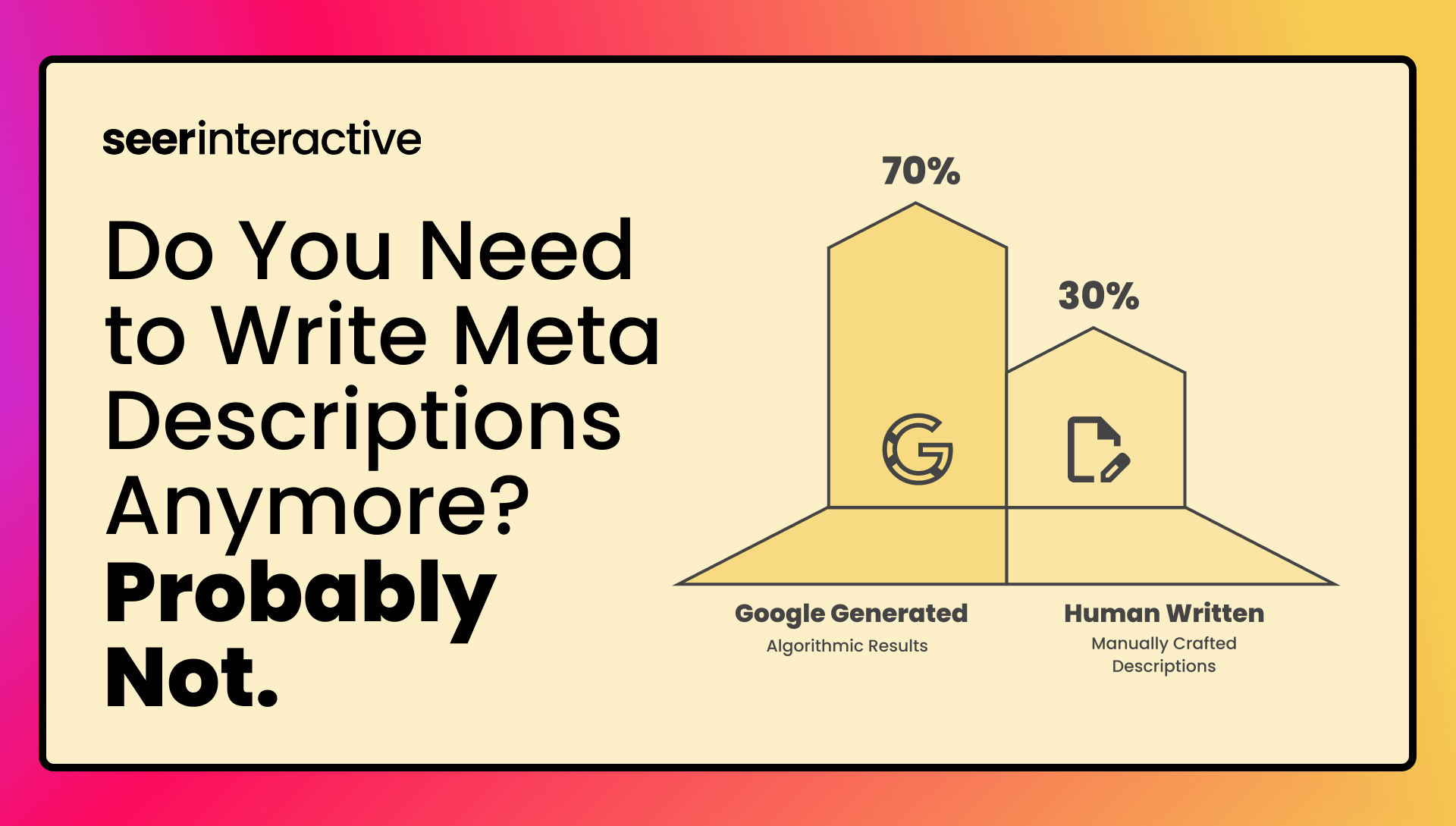A 404 is just fancy computer talk for “Not Found”. In other words, when you click on a link or type a URL into your browser bar, the browser goes to the server and is like, “Hey man, can I get this webpage?” and the server is like, “Sorry dude, I can’t find that page anywhere”.
Are 404s Bad for SEO?
Error pages are a common internet nuisance and their impact on SEO depends on the situation and why they are occurring in the first place. Below, I’ve outlined some of the situations from most critical to least:
Broken Internal Links
These occur either because a page no longer exists or because the page was incorrectly linked to. Not only do broken links provide a poor user experience, but they compromise a website’s integrity and interferes with Google’s ability to crawl and access the site.
How to Find Broken Internal Links:
Crawl your site periodically using a web crawler such as Screaming Frog. You can export a list of 404 pages from the ‘Response Codes’ tab or use the “All Inlinks” export to identify 404 pages and their source. Check out our Screaming Frog Guide to learn more about finding broken internal links.
Soft 404 Pages
A soft 404 occurs when a page that does not exist returns a 200 status code. It’s like if you ordered something off the menu at a restaurant and they brought you an empty place instead of just telling you that they were out of that item. Soft 404s are problematic because search engines will continue to crawl and index pages that don’t exist when that time could be better spent crawling pages that do exist.
How to Find Soft 404 Pages
You can find a list URLs Google suspects to be soft 404 pages in Google Search Console under Coverage > Errors. You can also perform a crawl in Screaming Frog, filter by pages that return a 200 status code, and then sort by word count by ascending order.
404s Without a Custom Error Page
Error pages are just a bad user experience but you can soften a users frustration and help reclaim potentially lost traffic by creating a custom 404 page. An effective custom 404 page will encourage users to further explore your site and help them find what they are looking for. At a minimum, an error page should contain links to common resources, consistent branding, a clearly stated error message, and an apology for the error.
An optimized error page will include:
- A simplified version of the navigation to help users find their way through the site.
- A site search box to encourage users to continue their site journey or discover new content they may not have been originally looking for.
- Depending on the site or situation, it may make sense to include contact details such as a phone number, email, social media, or chatbot.
Need some customer error page inspiration, check out Seer’s custom 404 page:

Old or Outdated Pages
Sometimes pages are old or become outdated and are removed from the site. This is normal and to be expected. Handling 404 errors is a balancing act. On one hand, having too many 404 errors could signal quality issues with your site. On the other hand, it’s impractical and taxing to try and wrangle every 404 page occurrence.
If the 404 page has earned quality backlinks or is receiving a significant volume of traffic, the page should be 301 redirected to the page that is most relevant or that best serves the users intent. If the page is not receiving traffic or links, it’s ok to let it 404. However, regardless if you decide to 301 or 404, make sure old or outdated URLs are removed from your XML sitemap.
How to Find Old and Outdated Links
- First, look at your website analytics to see which 404 pages are receiving referral traffic. In Google Analytics, you can do this by applying a filter for Page Titles that contain “page not found” (or whichever text is used in your error page title tag).
- Use a backlink tool like Ahrefs or Majestic to find 404 pages with backlinks. Identifying and redirecting these broken links can help your site regain lost link value. This process is known as backlink reclamation.
- Lastly, you can export a list of 404 pages Google has encountered by going to Coverage > Error in Google Search Console.
Mistyped or Malformed Links
Overly eager fingers and cats walking across your keyboard are probably the most unavoidable cause of 404 error pages. Many times, error pages occur because the URL was typed incorrectly. There’s not much you can do about these and it’s best to just to ignore them and let them 404.
404 - Answer Not Found?
If you’re still unsure about proper 404 handling, Seer can help! Comment your questions below or contact us to learn more.
Sign up for our newsletter for more posts like this - delivered straight to your inbox!


